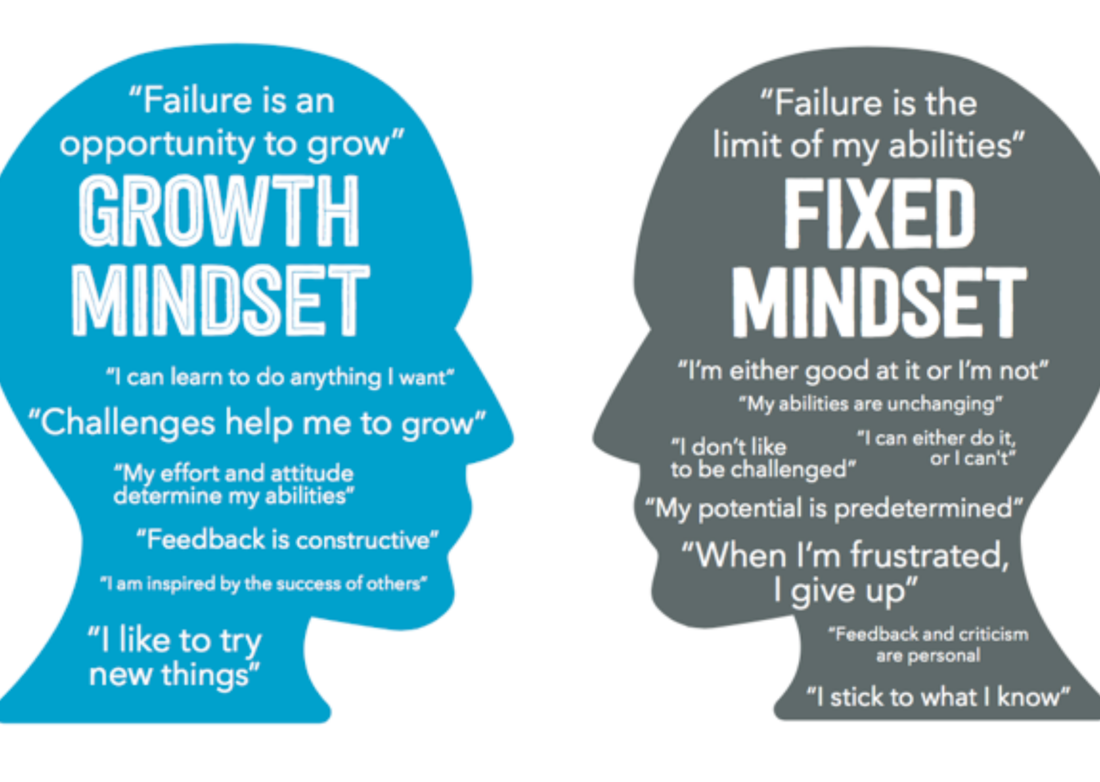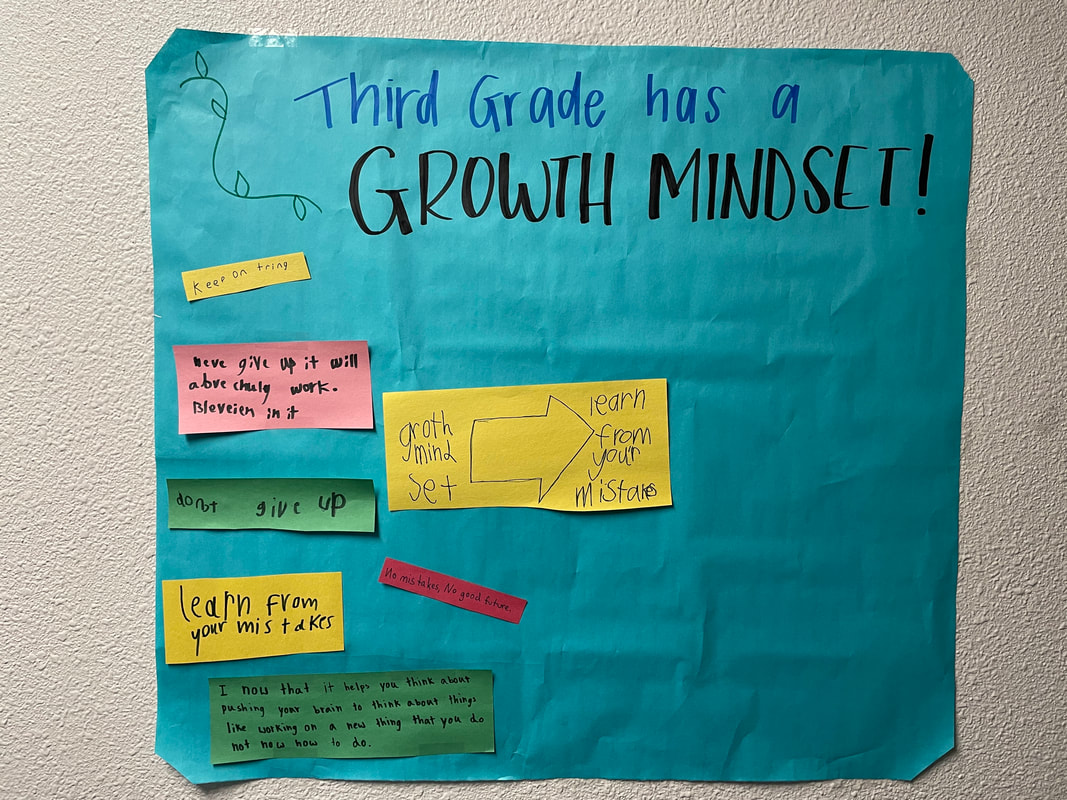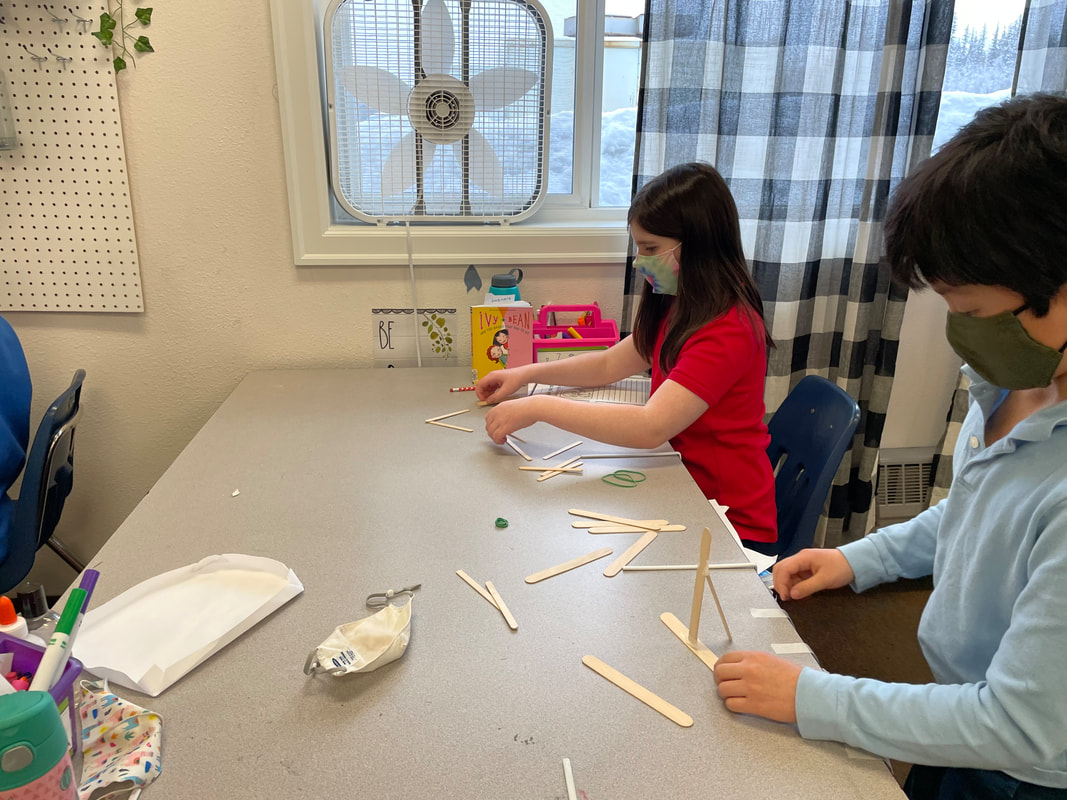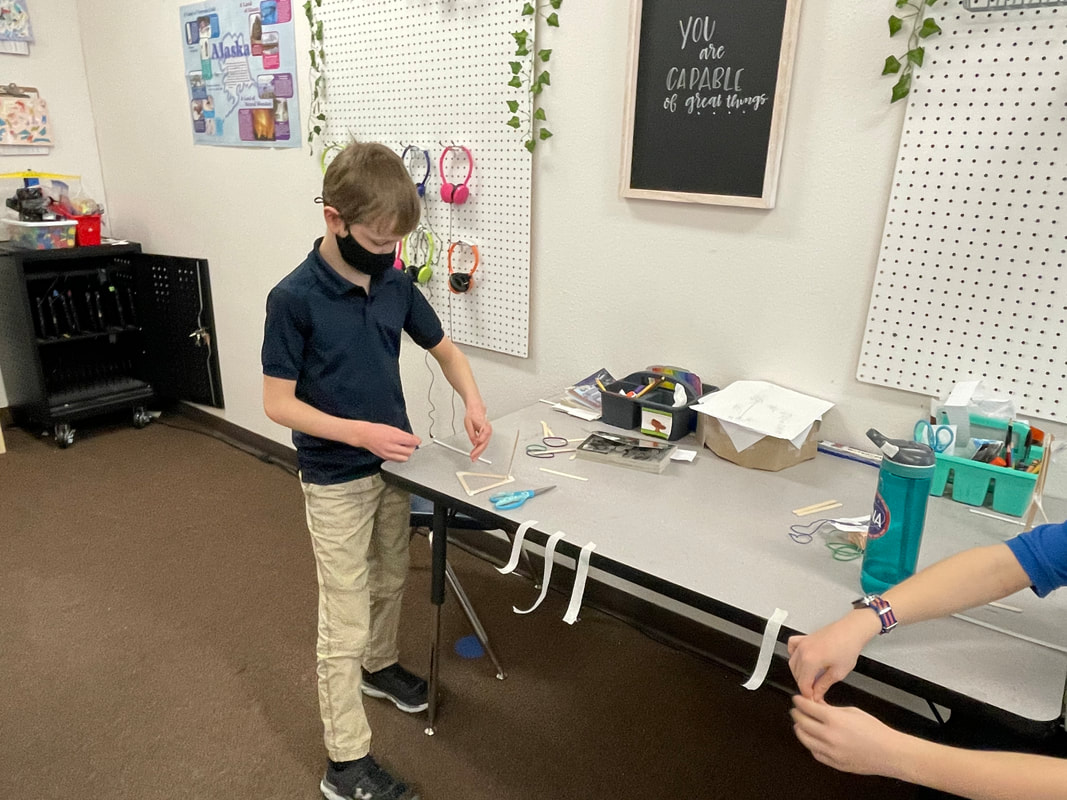Fixed Mindset v.s Growth Mindset
Instead of… Say…
Instead of, “I don’t know” say, “I don’t know YET.”
Instead of, “I messed up” say, “It’s okay that I failed, at least I learned something.”
Instead of, “I give up” say, “What can I do next to make this work?”
Instead of, “This is too hard” say, “I am at the starting point of my potential.”
Growth Mindset in the Classroom
One way students can adopt a growth mindset is by reflecting on their years academically and personally. As they progress through the year, they become better readers, mathematicians, scientists, and friends. To accomplish this growth, students must attempt difficult tasks, make mistakes, and overcome obstacles.
Each spring, students complete a self-reflection in which they identify their goals and their growth. That sense of perspective is really important in building independent and self-directed learners.
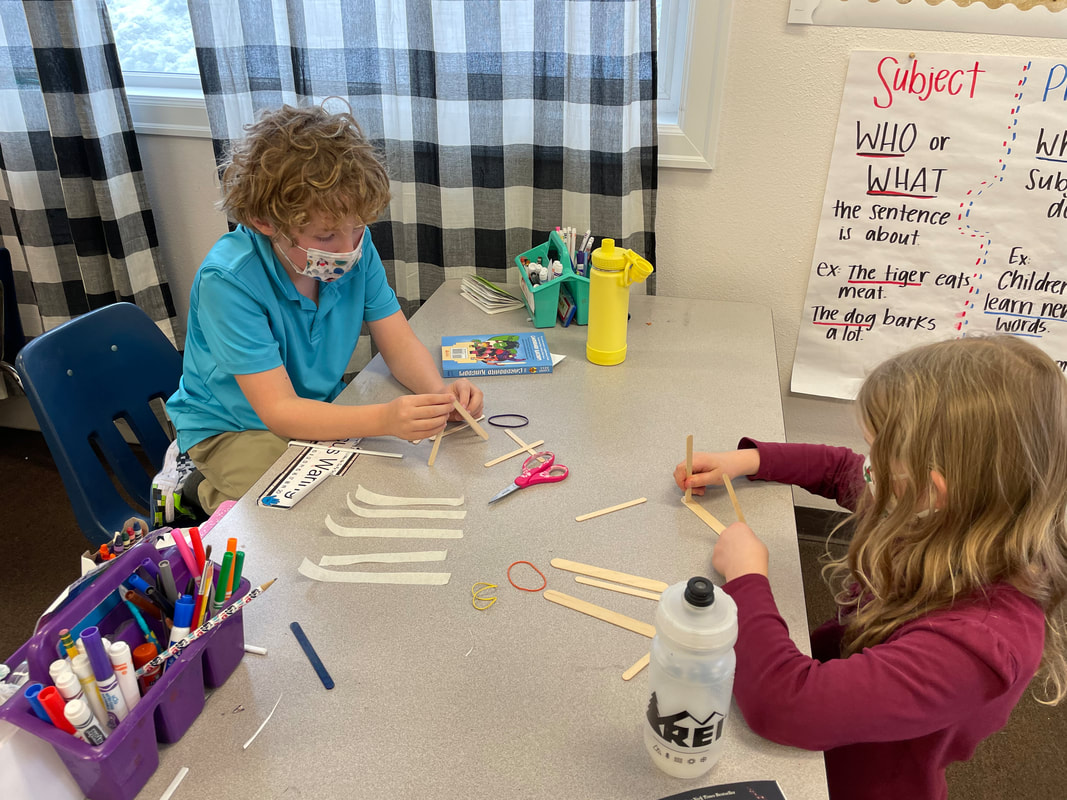
|
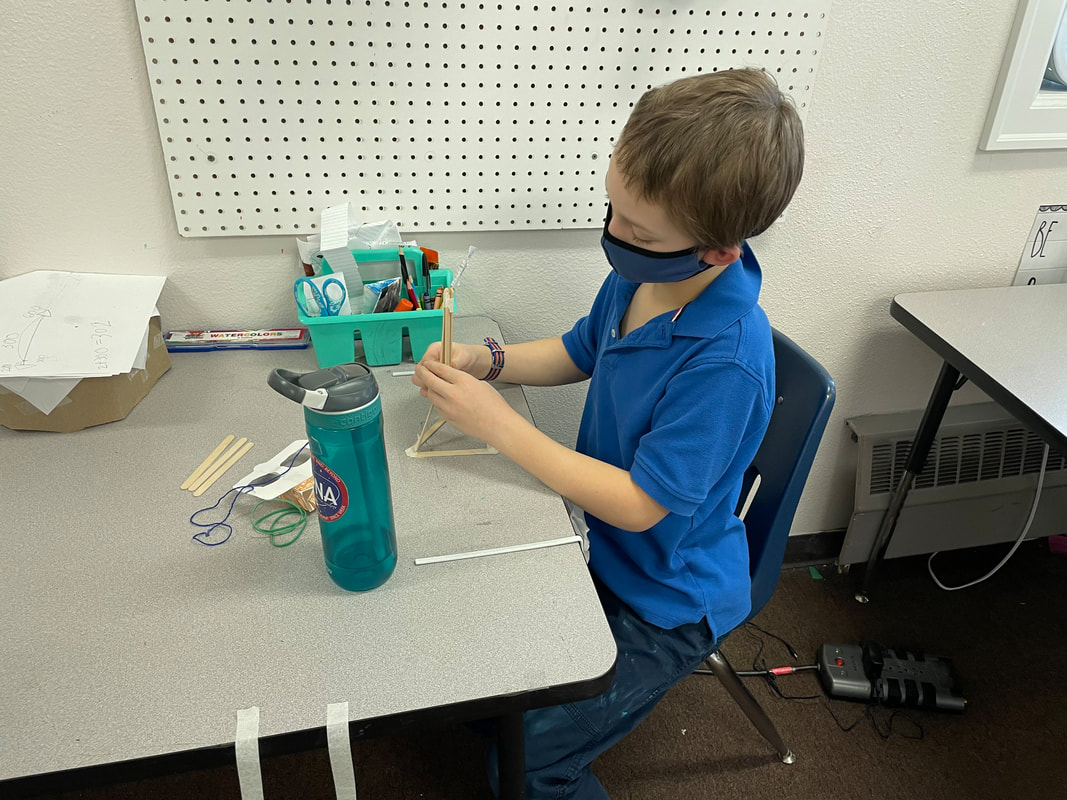
|
Another way students can adopt a growth mindset is by practicing trying again after failure. STEM activities allow for students to use their background knowledge and their problem-solving skills to create something they have most likely never attempted before.
Teaching children to have a growth mindset is the secret to self-esteem, resiliency, and motivation. It is the key to sustainable success.
Popova, M. (2020, February 16). Fixed vs. growth: The two Basic mindsets that shape our lives. Retrieved February 12, 2021, from https://www.brainpickings.org/2014/01/29/carol-dweck-mindset/

